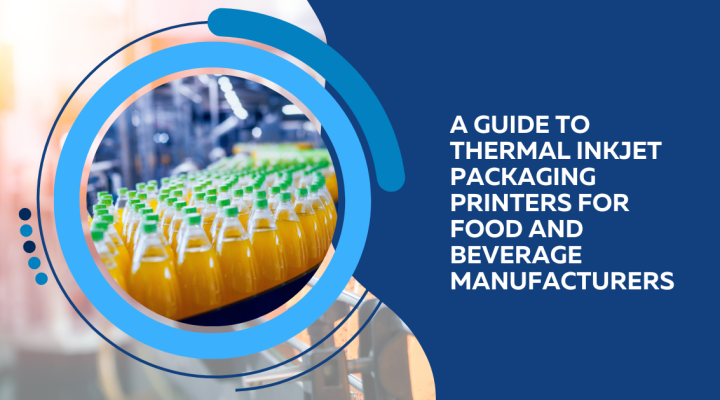
If you work in food and beverage production, you’ll know how important reliable coding is. Every pack, pouch, or carton needs a clear expiry date, batch number, or barcode - and it has to be printed cleanly, at speed, and in full compliance with regulations.
One of the simplest and most effective ways to achieve this is with thermal inkjet (TIJ) packaging printers. In this guide, we’ll take a closer look at what they do, why they’ve become so popular in the food and drink sector, and how they stack up against other coding technologies.
Unlike continuous inkjet (CIJ), which pumps ink continuously through a nozzle, a TIJ printer uses small, replaceable cartridges. The printhead inside the cartridge uses heat to fire tiny drops of ink directly onto the packaging surface.
The result? Sharp, high-resolution codes - often up to 600 dpi - without the maintenance headaches that come with other systems.
Best-before dates, batch codes, QR codes… whatever you need, TIJ printers deliver sharp, legible marks. That’s a big win when codes have to be scannable and easy to read right through the supply chain.
Food and beverage packaging lines move quickly, but TIJ doesn’t struggle to keep pace. You can print high-quality codes at well over 100 metres per minute without a drop in quality.
TIJ printers are small, light, and simple to set up. Swapping cartridges takes seconds, which means less downtime and less need for specialist training.
With no messy fluids to manage, no regular cleaning cycles, and no complex servicing, TIJ is about as close to “maintenance-free” as you can get in industrial printing.
From cardboard sleeves and cartons to foil lids and flexible pouches, TIJ printers can handle them all thanks to a wide range of inks - water-based, solvent-based, or UV-curable, depending on the substrate.
Some common uses of TIJ printers in food and beverage include:
TIJ often comes out on top when manufacturers want low running costs, simple operation, and excellent print quality.
Food and drink coding isn’t just about looking neat - it’s about meeting legal requirements and protecting consumers. TIJ printers help manufacturers stay compliant with:
Clear, reliable codes protect your brand as much as your customers.
Thermal inkjet packaging printers have earned their place on modern food and beverage lines. They’re clean, simple to run, and deliver excellent results across a wide range of packaging materials.
If you’re looking for a way to improve print quality, cut maintenance, and keep your coding compliant, TIJ could be the answer.
Want to find out if thermal inkjet is right for your packaging line? Contact us today and we’ll help you choose the best system for your products and production speed.